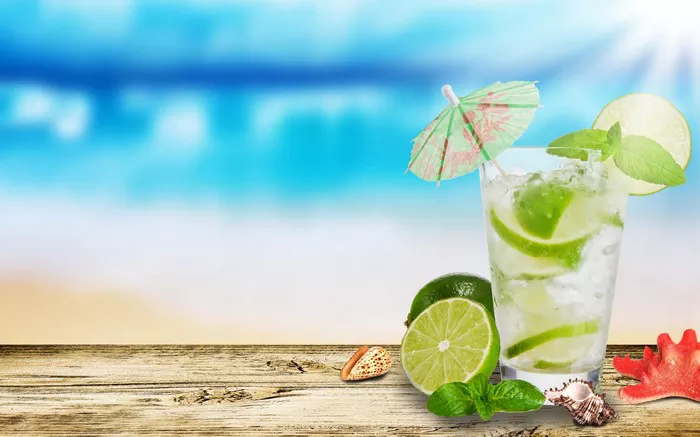The Long Island cocktail stands as an icon among mixed drinks, renowned for its potent yet delightful concoction. Renowned for its complex blend of liquors and flavors, it often sparks curiosity about its composition. Originating in the 1970s, this notorious beverage has garnered a dedicated following and an air of mystery due to its deceptively simple appearance. So, what is in a Long Island cocktail that gives it such a distinct and alluring taste?
The Origins and Evolution of the Long Island Cocktail
To comprehend what is in a Long Island cocktail, delving into its origin provides crucial insights. Created in the 1970s, the Long Island cocktail is believed to have emerged from Long Island, New York, hence its name. Despite its name, its invention isn’t solely attributed to Long Island; instead, it’s thought to have been concocted by a bartender seeking to use various liquors in a single drink. Over the years, the recipe has evolved, adapting to different preferences and mixology trends, but the core elements have remained consistent.
Deconstructing the Ingredients
Understanding what is in a Long Island cocktail requires dissecting its ingredients, which contribute to its distinctive taste and character. Contrary to its seemingly straightforward appearance, this cocktail is a complex blend of spirits, resulting in a surprisingly harmonious flavor profile.
The primary components of a Long Island cocktail typically encompass equal parts of vodka, rum, gin, tequila, and triple sec, a citrus-flavored liqueur. This combination of base spirits sets the stage for the cocktail’s potency and unique taste. Additionally, fresh lemon juice, simple syrup, and a splash of cola or cola-based soda serve as supplementary ingredients that enhance the drink’s complexity.
Vodka: A Key Player
Vodka, a staple in many classic cocktails, plays a crucial role in what is in a Long Island cocktail. Its neutral flavor profile allows the other spirits to shine while providing a smooth base. Typically derived from grains or potatoes, vodka’s inclusion contributes to the cocktail’s alcoholic strength without overpowering the overall taste.
Rum: A Caribbean Influence
Among the ensemble of liquors in a Long Island cocktail, rum adds a touch of sweetness and depth to the drink. With its origins rooted in the Caribbean, rum brings a nuanced flavor profile that complements the other spirits, contributing to the cocktail’s complexity.
Gin: Adding Herbal Notes
The addition of gin to a Long Island cocktail introduces herbal and botanical notes, elevating its overall flavor. Known for its infusion of juniper berries and various botanicals, gin’s inclusion imparts a distinctive aromatic quality to the drink, enhancing its multidimensional taste.
Tequila: A Spirited Addition
Tequila, crafted from the blue agave plant predominantly in Mexico, lends a hint of earthiness and a subtle agave sweetness to the Long Island cocktail. Its unique flavor profile stands out among the medley of spirits, contributing to the drink’s intriguing amalgamation of tastes.
Triple Sec: The Citrus Infusion
Triple sec, an orange-flavored liqueur, serves as a vital component in what is in a Long Island cocktail. Its citrusy essence adds brightness and depth to the drink, harmonizing the diverse array of spirits and providing a balanced citrus undertone.
The Art of Mixology: Crafting the Perfect Long Island Cocktail
Achieving the perfect balance of flavors in a Long Island cocktail requires precision and finesse. The art of mixology lies in carefully measuring and combining the ingredients to create a harmonious and well-rounded beverage.
Begin by filling a cocktail shaker with ice and adding equal parts of vodka, rum, gin, tequila, and triple sec. Follow this with a splash of fresh lemon juice and simple syrup. Vigorously shake the concoction to chill and thoroughly mix the ingredients. Strain the blend into a highball glass filled with ice and top it off with a splash of cola or a cola-based soda. Garnish with a lemon wedge or lime wheel for an added visual appeal.
Variations and Innovations
While the classic Long Island cocktail recipe remains a timeless favorite, mixologists and bartenders worldwide often infuse their creativity by adding personal twists and variations to the original formula. These variations might involve substituting certain spirits or incorporating additional ingredients to tailor the drink to different tastes and preferences.
Some innovative renditions might include using flavored vodkas, experimenting with different types of rum or gin, or even infusing the cocktail with fresh fruits or herbal elements. These inventive adaptations breathe new life into the traditional Long Island cocktail, catering to diverse palates and expanding its allure.
The Long Island Iced Tea: A Misnomer
Despite its name, the Long Island cocktail bears no resemblance in taste to a traditional iced tea. The misnomer is derived from its appearance, as the combination of spirits and cola results in a hue resembling iced tea. However, the flavors are a far cry from the refreshing and non-alcoholic beverage.
Enjoying the Long Island Cocktail Experience
Sipping on a Long Island cocktail is an experience meant to be savored and enjoyed responsibly. Its potent blend of liquors demands moderation, ensuring the pleasure of its flavors without overwhelming the senses.
Whether relishing this concoction at a sophisticated cocktail bar or crafting it at home, appreciating the intricate combination of spirits and flavors is integral to fully embracing the Long Island cocktail experience. The drink’s complexity and depth invite enthusiasts to explore its nuances with each sip, making it a perennial favorite among cocktail aficionados.
Conclusion
In conclusion, the Long Island cocktail’s allure lies in its enigmatic blend of spirits and complementary flavors. Understanding what is in a Long Island cocktail illuminates the intricacies behind this iconic drink, revealing a harmonious fusion of vodka, rum, gin, tequila, triple sec, and additional elements that create a symphony of tastes. As this legendary cocktail continues to captivate palates worldwide, its timeless appeal and adaptability ensure its enduring status as a beloved classic in the realm of mixology.


